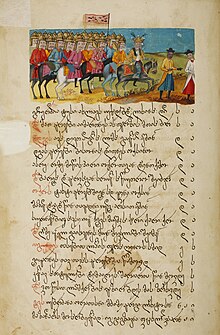Shejrhoi Mirzo Tursunzoda Dust
We believe greatness in sports inspires excellence in business. Thuzio profiles renowned athletes and sports personas, showcasing the shared values of sports and business - success, leadership, community, teamwork, and more. Mirzo Tursunzoda in the development of the culture of the Tajik people put a tremendous contribution. At one time he was a favorite of the people, and especially.
Welcome Welcome to! Feel free to post anything related to Iran, Iranians, the culture and language here. Persons from all backgrounds are welcome to participate in Persian or English. Subreddit Guidelines Be civil, polite, and fair Follow the. Follow The downvote button is NOT a disagree button.
Upvote quality posts and comments, and downvote those that are low-effort or irrelevant. Don't spam Don't post links that contain malware. Don't post self-promotional or advertising content. Don't attack other users Refrain from attacking other users personally or engaging in hate speech.
Header Art Edited from (2016) by Official Chat Room to join our IRC channel on Snoonet. The same guidelines as above apply. Channel info: #iran @ irc.snoonet.org IRC Link: Documentaries Iran 2016 Iran: Between Two Worlds (1954) People of Iran Rick Steves' Iran Wild Iran: The Unveiled Collection of Iran's Plants and Animals Iran by Mandy Tay Curves of Iran by Stanislas Giroux Persian Jam Persians of Zanzibar Dust Flower Flame Related Subreddits • • • • • • • • • • • • •.
Photo shoot time With Actress Preethi. Thank u zee telugu and rama seetha fans!!!. Rama sita ekkada serial.
She's very talented. I started listening to her when I was learning Farsi, and one of the things that drew me to her songs was the quality of the lyrics.
Of course, her voice is great and so is the music, but you'll notice that her songs generally feature more poetic verses than your typical Persian pop. I had made a few attempts in the past to transcribe her lyrics because I wanted to know exactly what she was saying (finding them on the Internet is not so easy). Some of her songs, like 'Chashmi Siyohe' (the one I linked to in the edit), are based on famous poems. Some others are well-known folk songs or 'oldies' from the past generation of famous Tajik singers. Out of all the popular singers in Tajikistan today she's probably the most culturally significant.

You can find pretty much all of her official releases on Spotify. Her two major albums, 'Asiri Nigoh' and 'Retro', include most of her best songs, and there are a handful of singles that came out in the last couple years, 'Otash' being a really good one.
Abū-Mansūr Qatrān-i Tabrīzī (: قطران تبريزى, 1009–1072) was a poet. He was born in Sahar near Arrah, and was the most famous of his time in. His full name according to a manuscript that is attributed (although scholars are not sure if this attribution to Anvari is 100% is correct) to the famous poet (529 about 60 years after the death of Qatran) is Abu Mansur Qatran al-Jili al-Azerbaijani. The Al-Jili would identify his ancestry from while he himself was born in Shadiabad. He also identifies himself as part of the Dehqan class. According to: “He sings the praise of some thirty patrons. His work has aroused the interest of historians, for in many cases Qatran has perpetuated the names of members of regional dynasties in Azerbayjan and the region that would have otherwise fallen in oblivion.
His best qasidas were written in his last period, where he expressed gratitude to the prince of, the Fadlun, for the numerous gifts that were still recollected by the famous Jami (d. Qatran’s poetry follows in the wake of the poets of Khurasan and makes an unforced use of the rhetorical embellishment. He is even one of the first after to try his hand at the Qasida-i Masnu’i, ‘particular artificial qasida’'. According to Jan Rypka: When Nasir Khusraw visited Azarbaijan in 1046, Qatran requested to him to explain some of the most difficult passages in the divan of Munjik and Daqiqi that were written in “Persian”, i.e. According Chr.
Shaffer, in the Persian of Khurasan, a language that he, as a Western Persian, might not be expected to understand, in contrast to the guest from Khurasan. Kasravi is of the opinion that the text of the Safar-nama has here been corrupted because Qatran, though he spoke (the old Iranian language of Azerbaijan before the advent of Oghuz Turks) was fully acquainted with (Khurasani dialect of) Persian, as his Divan shows. De Blois mentions that: The point of the anecdote is clear that the diwans of these poets contained Eastern Iranian (i.e. Sogdian etc.) words that were incomprehensible to a Western Persian like Qatran, who consequently took advantage of an educated visitor from the East, Nasir, to ascertain their meaning. Qatran Tabrizi has an interesting couplet mentioning this fact: “ بلبل به سان مطرب بیدل فراز گل گه پارسی نوازد، گاهی زند دری Translation: The nightingale is on top of the flower like a minstrel who has lost her heart It bemoans sometimes in Parsi (Persian) and sometimes in Dari (Khurasani Persian) ” Qatran’s on the earthquake of Tabriz in 1042 CE has been much praised and is regarded as a true masterpiece (Jan Rypka, History of Iranian Literature.